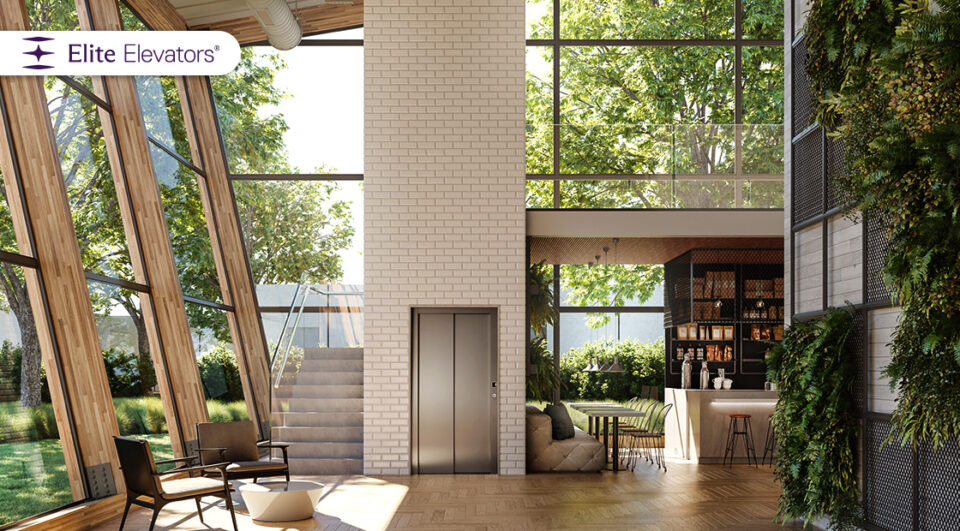When considering the installation of a 2-person lift, whether for a residential home, small office, or commercial space, one of the first questions on everyone’s mind is, “How much will it cost?” Understanding the costs involved can help you budget properly, avoid unexpected expenses, and choose the right solution for your needs.
In this comprehensive guide, we’ll break down the factors that affect the cost of installing a 2-person lift, typical price ranges, and tips to get the best value.
What Is a 2-Person Lift?
A 2-person lift is a compact elevator designed to comfortably carry two passengers at a time. These lifts are often used in:
- Small residential buildings
- Boutique commercial spaces
- Medical clinics
- Older homes needing accessibility solutions
- Retail stores with limited vertical traffic
They are a practical option when space is limited but vertical transport is necessary. Typically, a 2-person lift has a capacity of around 300 to 500 kilograms (approximately 660 to 1100 lbs), depending on the model.
Typical Price Range for a 2-Person Lift Installation
The price to install a 2-person home lift can vary widely, but here’s a general breakdown based on industry data for 2025:
| Cost Component | Estimated Price Range (USD) |
| Basic 2-Person Lift Unit | $10,000 – $20,000 |
| Installation & Labor | $5,000 – $15,000 |
| Construction (shaft, electrical) | $5,000 – $20,000+ |
| Permits and Inspections | $500 – $2,000 |
| Optional Features (finishes, automation) | $1,000 – $5,000+ |
| Total Estimated Cost | $20,000 – $60,000+ |
This wide range depends on several factors, which we’ll explore next.
Key Factors Influencing the Cost of a 2-Person Lift Installation
1. Type of Lift
There are several types of lifts suitable for 2-person capacity, including:
- Hydraulic lifts: Require a machine room or space for the hydraulic pump. Typically, more costly to install but offer a smooth ride.
- Traction lifts: Use cables and counterweights; usually more energy-efficient but need a shaft.
- Pneumatic (vacuum) lifts: Use air pressure, need minimal space, and are less invasive but have lower weight capacity and speed.
- Shaftless or self-supporting lifts: Ideal for retrofit projects with minimal structural changes.
Each type has different installation complexity and price implications.
2. Installation Complexity
- New Construction vs. Retrofit: Installing a lift during new construction is often less expensive since the building can be designed with the lift in mind. Retrofitting an existing structure can be more costly due to modifications required for shafts, electrical wiring, and reinforcement.
- Structural Changes: Cutting into floors or walls, building elevator shafts, and reinforcing foundations can drive costs up significantly.
- Electrical and Mechanical Work: Electrical upgrades and mechanical system setup add to labor and materials costs.
3. Location and Accessibility
- Urban areas with high labor costs typically see higher installation prices.
- Difficulty of site access for equipment or materials can increase costs.
- Permitting requirements vary by region, impacting timelines and fees.
4. Features and Finishes
The cost can increase with custom finishes, lighting, automation, and control options:
- Custom interior panels (wood, glass, stainless steel)
- Automatic doors vs. manual doors
- Smart controls (touchscreen panels, smartphone integration)
- Energy-efficient drives and lighting
5. Safety and Compliance
Compliance with local building codes, accessibility standards (like ADA in the U.S.), and safety inspections can add upfront and ongoing costs but are essential for safe operation.
Breakdown of Installation Cost Components
1. Equipment Cost
The elevator car and mechanical components typically account for 40%–50% of the total cost. The base price for a 2-person lift ranges between $10,000 and $20,000 for standard models.
2. Installation and Labor
Skilled labor is critical for proper lift installation. Costs vary by region but generally fall between $5,000 and $15,000 depending on complexity and time required.
3. Construction Costs
If your building lacks a dedicated shaft or machine room, construction costs for these additions can range from $5,000 to $20,000 or more.
4. Permits and Inspections
Local authorities may charge fees ranging from $500 to $2,000 or higher for permits, inspections, and certifications.
How to Save on Your 2-Person Lift Installation
1. Plan Early
If you’re building a new home or commercial space, plan the elevator shaft and electrical requirements early to avoid costly retrofits.
2. Choose the Right Lift Type
Assess your building’s layout and needs to select a lift type that minimizes construction and installation complexity.
3. Get Multiple Quotes
Request detailed quotes from several reputable elevator companies. Compare not just price but what’s included—warranty, maintenance plans, support.
4. Consider Standard Models
Custom finishes and features look great but increase costs. Opting for standard interiors and basic automation can keep costs down.
5. Factor in Long-Term Costs
Sometimes paying more upfront for energy-efficient, low-maintenance lifts saves money over years of operation.
What to Expect During the Installation Process
- Site Assessment: Elevator company inspects your building and discusses requirements.
- Design and Planning: Customized elevator design, permit applications.
- Construction: Building or modifying shafts, electrical wiring, and machine room installation.
- Lift Installation: Assembly and installation of elevator components.
- Testing and Inspection: Safety and compliance testing before handover.
- Training: Guidance on elevator operation and maintenance.
The entire process can take anywhere from 4 to 12 weeks, depending on project scope.
Maintenance and Running Costs
Beyond installation, regular maintenance is essential for safety and reliability. Maintenance contracts usually cost between $300 and $700 annually, depending on usage and service level.
Energy costs for a 2-person home lift are generally low but vary based on drive type and usage frequency.
Is a 2-Person Lift Worth the Investment?
While the initial investment may seem high, a 2-person lift offers significant benefits:
- Accessibility: Ensures mobility for residents or customers with disabilities.
- Convenience: Saves time and effort moving between floors.
- Property Value: Can increase home or building resale value.
- Future-proofing: Supports aging in place or changing building needs.
For many, these advantages justify the cost.
Final Thoughts
Installing a 2-person lift involves several cost factors—from the type of lift and construction needs to features and local regulations. Expect to invest between $20,000 and $60,000+ for a full installation in 2025.
The best approach is to thoroughly assess your building and needs, consult with experienced elevator companies, and obtain multiple detailed quotes. This way, you’ll find a solution that balances cost, functionality, and quality.
If you’re considering installing a 2-person lift and want expert advice or a personalized quote, feel free to reach out to trusted elevator professionals in your area.

